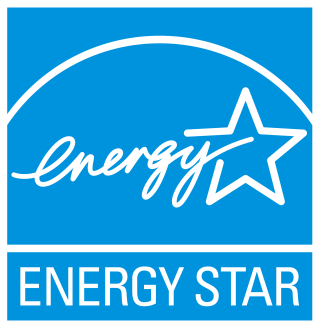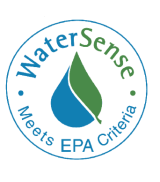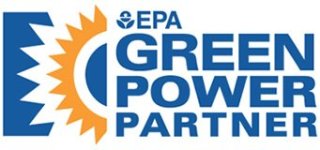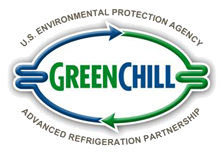Manufacturer Information on Greener Products
- Making a difference
- Considering the full array of impacts
- Aligning with ecolabels and standards
- Making environmental claims
Making a difference for your business, community, and health
By designing and making greener products, your business will be joining the ranks of companies who are not only helping improve human health and the environment, but also gaining a crucial competitive edge as consumer demand for greener products increases worldwide.
The federal government is the single largest purchaser in the world, spending more than $760 billion on products and services each year, and is dedicated to purchasing greener products and services to meet our climate, sustainability and environmental goals. To understand federal sustainable purchasing requirements and recommended standards and ecolabels for the products and services that you offer, visit GSA’s Green Procurement Compilation (GPC).
Considering the full array of impacts
As a manufacturer, you should consider the full array of human health and environmental impacts associated with, not only your operations, but also your products, services, and supply chain, which may include:
- Climate change
- Exposure to chemicals of concern
- Air pollution
- Water pollution
- Stratospheric ozone depletion
- Natural resource use (e.g., energy, water, materials)
- Waste disposal
- Ecosystem damages
It is important to consider human health and environmental impacts over a product's entire life cycle:
- Sourcing of raw materials
- Manufacturing
- Packaging
- Transportation
- Distribution
- Retailing
- Use of the product
- Management of the product when it is broken or no longer needed – through repair, reuse, or safe recycling and/or disposal

Adapted with permission from Interface, Inc.
Different product categories have different human health or environmental "hotspots" of concern. For example, formulated products, such as those used in cleaning and personal care, have a high potential for direct human and environmental exposures, hence the toxicity of the formulated product is of paramount importance. Alternatively, water usage may be the primary concern for kitchen and bath fixtures. In these cases, focusing on the hotspot(s) of concern, versus the full lifecycle may be most appropriate.

Where possible, manufacturers should assess when their choices might result in burden shifting - resolving one environmental or human health problem only to create others elsewhere. For example, selecting bio-based products reduces fossil fuel extraction and inputs and the emission of greenhouse gases, but the growing and harvesting of bio-feedstocks may pollute water sources and degrade soil quality. Applying a life cycle approach and going beyond single-issue concerns will provide insight into the upstream and downstream trade-offs associated with environmental pressures, human health, and the use of resources.
In addition to these considerations, question whether your manufacturing process could reduce its environmental impact by reducing and/or reusing materials. This could not only benefit the environment by saving energy, reducing waste, and preventing pollution, but it could also save you money. Visit the reducing and reusing basics webpage for more information.
Aligning with ecolabels and standards
Aligning with credible and effective ecolabels and standards may help you identify environmental and human health impacts to consider and proven strategies for minimizing those impacts. Ecolabels and standards can also be an easy way to communicate very complex environmental advantages of your product to customers.
However, knowing which standard or ecolabel is right for your product can be challenging. To help with this issue, EPA has developed a number of ecolabels that can help purchasers identify greener products and services. In addition, EPA manages the Recommendations of Specifications, Standards, and Ecolabels which includes more than 60 private sector standards/ecolabels in more than 40 purchase categories and indicate where there may be an applicable statutory requirement for federal purchasing or an EPA owned/managed ecolabel. Below is a sample of ecolabels that address energy efficiency, water efficiency, fleet management, refrigerant emissions, and green power. Click on each ecolabel to find out more about the individual programs or read EPA's introduction to ecolabels and standards.
Making environmental claims
Making credible environmental claims about products and services in alignment with the U.S Federal Trade Commission's Guides to the Use of Environmental Marketing Claims (Green Guides) is one way manufacturers are responding to market demand.
The FTC Green Guides:
- Are intended to reduce consumer confusion and prevent false or misleading use of environmental terms in product advertising and labeling.
- Indicate how the FTC will apply Section 5 of the Federal Trade Commission Act, which prohibits unfair or deceptive acts or practices, in environmental marketing claims.
- Apply to all forms of product and service marketing to the public, including advertisements, labels, package inserts, promotional materials and electronic media
If you see a claim that does not meet the FTC Green Guides, let the FTC know.
Learn about environmental claim verification best practices for product manufacturers.
The United Nations Environment Programme (UNEP) provides global guidance on making effective environmental, social and economic claims, to empower and enable consumer choice. UNEP's Guidelines for Providing Product Sustainability Information provides guidance on making effective, trustworthy claims to consumers, on product-related sustainability information.






